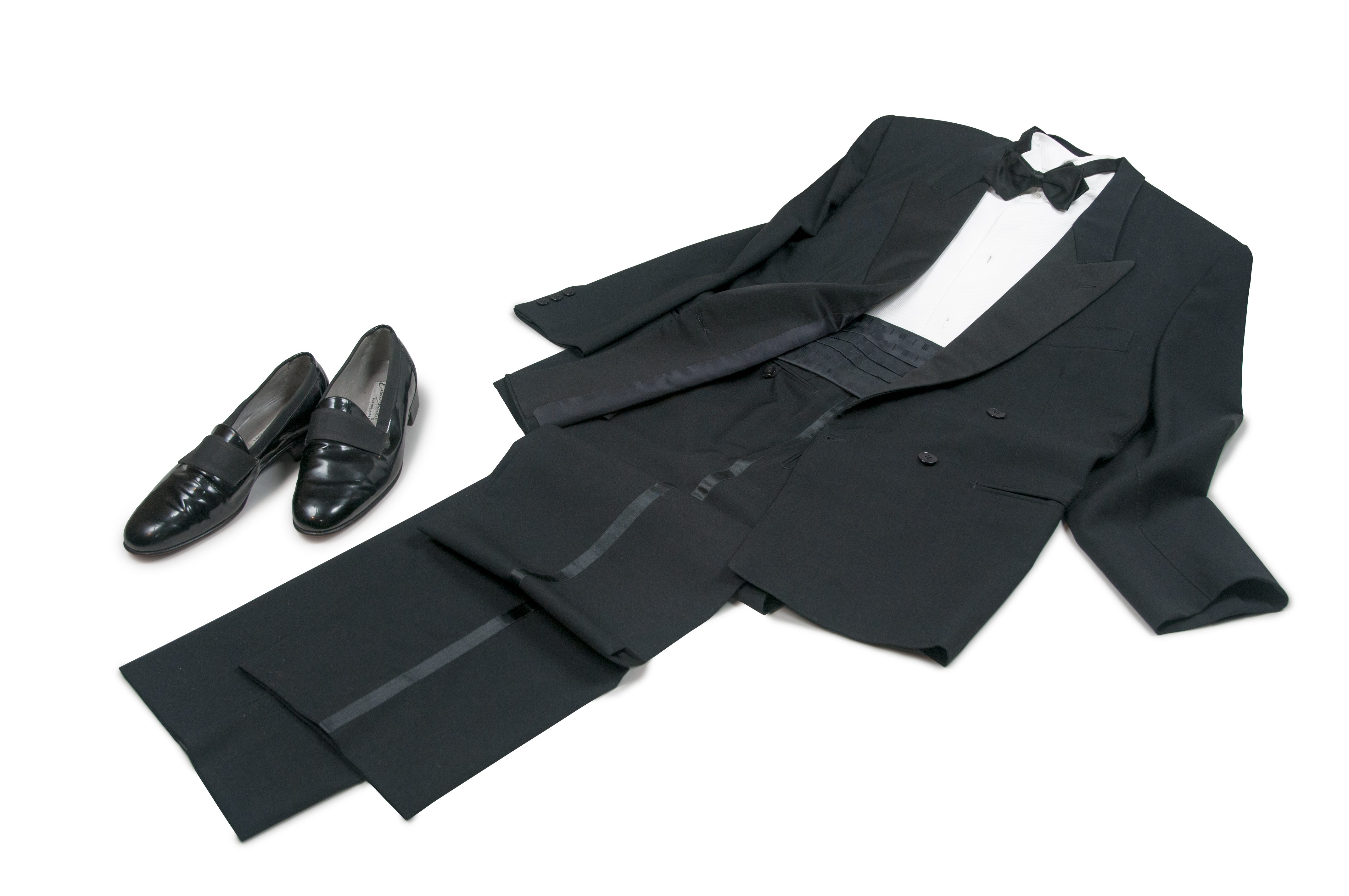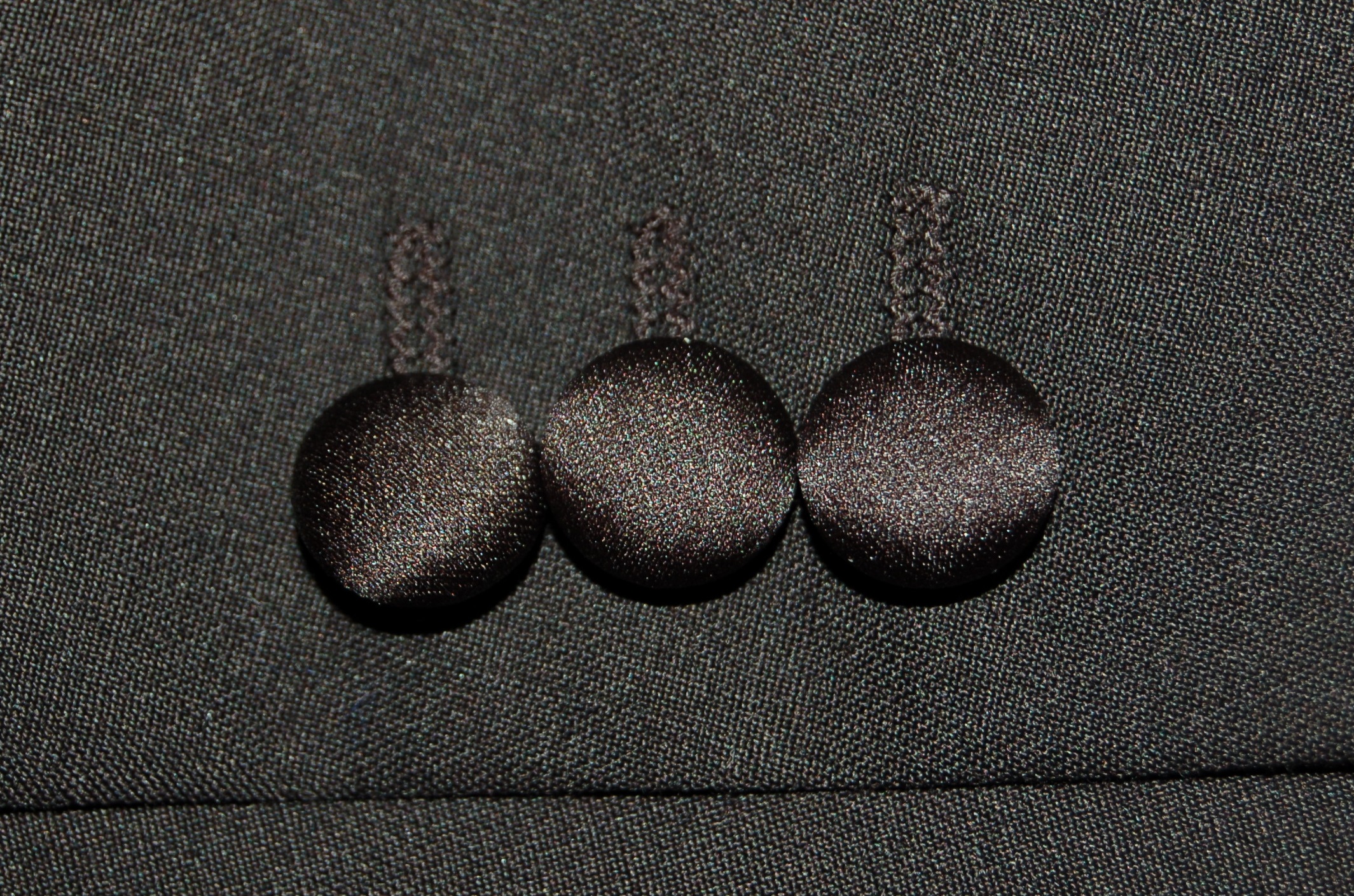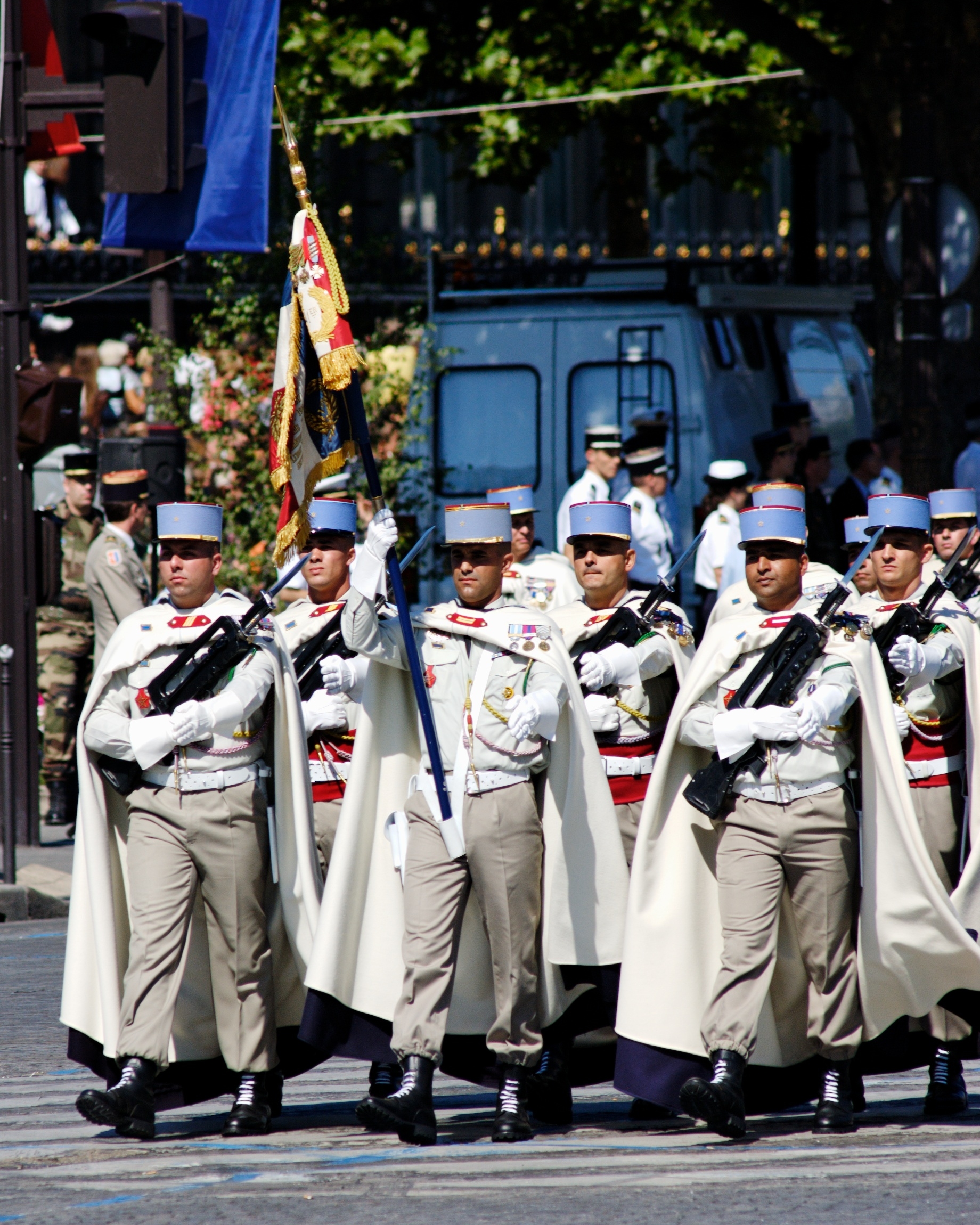|
Cummerbund
A cummerbund is a broad waist sash, usually pleated, which is often worn with single-breasted dinner jackets (or ''tuxedos''). The cummerbund was adopted by British military officers in colonial India, where they saw it worn by sepoys (Indian soldiers) of the British Indian Army. It was adopted as an alternative to the waistcoat, and later spread to civilian use. The modern use of the cummerbund for Europeans and North Americans is as a component of the traditional black tie Western dress code. Etymology The word ''cummerbund'' is the Anglicized form of Hindustani ''kamarband'' ( Hindustani: कमरबंद; ), which originated from the Persian (). It entered English vocabulary in 1616 from India. It is a combination of the words ''kamar'' meaning 'waist' and ''band'' meaning 'to close' or 'fasten' (not to be confused with ‘band’ from Old Norse, reinforced in late Middle English by Old French bande, of Germanic origin; related to bind). The 'waist-band' was a sash acces ... [...More Info...] [...Related Items...] OR: [Wikipedia] [Google] [Baidu] |
Dinner Jacket
Black tie is a semi-formal wear, semi-formal Western dress code for evening events, originating in British and North American conventions for clothing, attire in the 19th century. In British English, the dress code is often referred to synecdochically by its principal element for men, the dinner suit or dinner jacket. In American English, the equivalent term tuxedo (or tux) is common. The dinner suit is a black, midnight blue or white two- or three-piece Suit (clothing), suit, distinguished by satin or grosgrain jacket lapels and similar stripes along the seam (sewing), outseam of the trousers. It is worn with a white dress shirt with standing or turndown Collar (clothing), collar and link cuffs, a black bow tie, sometimes an evening waistcoat or a cummerbund, and black patent leather dress shoes or court pumps. Accessories may include a semi-formal Homburg (hat), homburg, bowler hat, bowler, or boater hat. In Britain, some individuals may rebel from the formal dress code by wear ... [...More Info...] [...Related Items...] OR: [Wikipedia] [Google] [Baidu] |
Black Tie
Black tie is a semi-formal Western dress code for evening events, originating in British and North American conventions for attire in the 19th century. In British English, the dress code is often referred to synecdochically by its principal element for men, the dinner suit or dinner jacket. In American English, the equivalent term tuxedo (or tux) is common. The dinner suit is a black, midnight blue or white two- or three-piece suit, distinguished by satin or grosgrain jacket lapels and similar stripes along the outseam of the trousers. It is worn with a white dress shirt with standing or turndown collar and link cuffs, a black bow tie, sometimes an evening waistcoat or a cummerbund, and black patent leather dress shoes or court pumps. Accessories may include a semi-formal homburg, bowler, or boater hat. In Britain, some individuals may rebel from the formal dress code by wearing coloured socks or a bow tie that is not black, such as red. For women, an evening gow ... [...More Info...] [...Related Items...] OR: [Wikipedia] [Google] [Baidu] |
Uniforms Of The United States Navy
The uniforms of the United States Navy include dress uniforms, daily service uniforms, working uniforms, and uniforms for special situations, which have varied throughout the history of the navy. For simplicity in this article, ''officers'' refers to both Officer (armed forces), commissioned officers and Warrant officer (United States), warrant officers. Dress uniforms The United States Navy has three categories of dress uniforms, from least to most formal: service, full, and dinner dress. Service dress Service dress uniforms are worn for official functions not rising to the level of full or dinner dress. They are also commonly worn when traveling in official capacity, or when reporting to a command. The civilian equivalent is a business suit. Service Dress Blue may be worn year-round, while Service Dress White is reserved for summer or tropical zones. Ribbons are worn over the left breast pocket in all variations of the service dress uniform. Officers and chief petty officers ... [...More Info...] [...Related Items...] OR: [Wikipedia] [Google] [Baidu] |
Uniforms Of The United States Army
The uniforms of the United States Army distinguish soldiers from other service members. U.S. Army uniform designs have historically been influenced by British and French military traditions, as well as contemporary U.S. civilian fashion trends. The two primary uniforms of the modern U.S. Army are the Army Combat Uniform, used in operational environments, and the Army Green Service Uniform, worn during everyday professional wear and during formal and ceremonial occasions that do not warrant the wear of the more formal blue service uniform. History The design of early army uniforms was influenced by both British and French traditions. One of the first Army-wide regulations, adopted in 1789, prescribed blue coats with colored facings to identify a unit's region of origin: New England units wore white facings, southern units wore blue facings, and units from Mid-Atlantic states wore red facings. Bandsmen wore red uniforms to make them more easily identifiable to commanders on the f ... [...More Info...] [...Related Items...] OR: [Wikipedia] [Google] [Baidu] |
Sash
A sash is a large and usually colorful ribbon or band of material worn around the human body, either draping from one shoulder to the opposing hip and back up, or else encircling the waist. The sash around the waist may be worn in daily attire, but the sash from shoulder to hip is worn on ceremonial occasions only. Ceremonial sashes are also found in a V-shaped format, draping straight from both shoulders down, intersecting and forming an angle over the chest or abdomen. Military use Old Europe In the mid-and late-16th century waist and shoulder sashes came up as a mark of (high) military rank or to show personal affection to a political party or nation. During the Thirty Years' War the distinctive sash colour of the House of Habsburg was red while their French opponents wore white or blue sashes and the Swedish voted for blue sashes. Beginning from the end of the 17th century, commissioned officers in the British Army wore waist sashes of crimson silk. The original office ... [...More Info...] [...Related Items...] OR: [Wikipedia] [Google] [Baidu] |
Spahis
Spahis () were light-cavalry regiments of the French army recruited primarily from the Arab and Berber populations of Algeria, Tunisia and Morocco. The modern French Army retains one regiment of Spahis as an armoured unit, with personnel now recruited in mainland France. Senegal also maintains a mounted unit with spahi origins as a presidential escort: the Red Guard. Etymology The name is the French form of the Ottoman Turkish word , a word derived from Persian , "soldier", "horseman", ultimately from Persian meaning "army", "cavalry". Early history Following the French occupation of Algiers in 1830, detachments of locally recruited irregular horsemen were attached to the regiments of light cavalry assigned to North African service. These auxiliaries were designated as '' chasseurs spahis''. Between 1834 and 1836 they were organised into four squadrons of regular spahis. In 1841 the 14 squadrons by then in existence were brought together in a single corps of spahis. ... [...More Info...] [...Related Items...] OR: [Wikipedia] [Google] [Baidu] |
Chasseurs D'Afrique
''Chasseur'' ( , ), a French language, French term for "hunter", is the designation given to certain regiments of France, French and Belgium, Belgian light infantry () or light cavalry () to denote troops trained for rapid action. History This branch of the French Army originated during the War of the Austrian Succession when, in 1743, Jean Chrétien Fischer was authorized by the Charles Louis Auguste Fouquet, duc de Belle-Isle, Marshal de Belle-Isle to raise a 600 strong mixed force of infantry and cavalry. It was called ''Chasseurs de Fischer.'' During the remainder of the 18th century various types of light troops () were employed within the French army, either as independent units or as companies within existing regiments. In 1788, there were 8 battalions of chasseurs, and in March 1793 this was expanded to 21 battalions. The first battalions of Chasseurs raised by 1788 included: * (1st) ''Chasseurs Royaux de Provence'' * (2nd) ''Chasseurs Royaux de Dauphiné'' * (3rd) ... [...More Info...] [...Related Items...] OR: [Wikipedia] [Google] [Baidu] |
Zouaves
The Zouaves () were a class of light infantry regiments of the French Army and other units modelled on it, which served between 1830 and 1962, and served in French North Africa. The zouaves were among the most decorated units of the French Army. It was initially intended that the zouaves would be a regiment of Berber volunteers from the Zwawa group of tribes in Algeria ("Zwawa" being the origin of the French term ''zouave'') who had gained a martial reputation fighting for local rulers under the Regency of Algiers. The regiment was to consist of 1,600 Zwawa Berbers, French non-commissioned officers and French officers. 500 Zwawa were recruited in August and September 1830. However, twelve years later, this idea was dropped. More zouave regiments were raised and the men recruited to serve in them were almost exclusively French or people of French descent born in French Algeria (''pieds-noirs''), a policy which continued until the final dissolution of these regiments after the A ... [...More Info...] [...Related Items...] OR: [Wikipedia] [Google] [Baidu] |
Army Of Africa (France)
The Army of Africa ( ) was an unofficial but commonly used term for those portions of the French Army stationed in French North Africa (Morocco, Algeria and Tunisia) from 1830 until the end of the Algerian War in 1962, including units made up of indigenous recruits. Composition The Army of Africa included indigenous Arab or Berber volunteers; (spahis, Goumiers and tirailleurs); regiments largely made up of pied-noir French settlers doing their military service ( zouaves and chasseurs d'Afrique); and non-French volunteers (Légion étrangère). The divisions were not absolute and (for example) volunteers or conscripts from mainland France might choose to serve with the Muslim rank and file of the spahis and tirailleurs, while Arab volunteers might appear amongst the ranks of the zouaves. Prior to World War I, one battalion of each of the four zouave regiments then in existence, was recruited in France. These battalions' bases were thereby providing a framework that could be exp ... [...More Info...] [...Related Items...] OR: [Wikipedia] [Google] [Baidu] |








